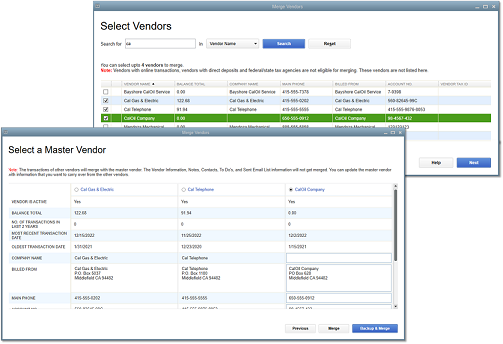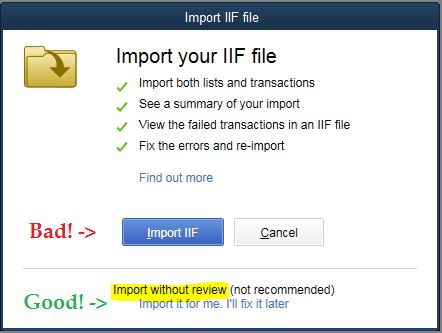

So, when you use it, you don't have to remember which Account Number you use for which account.This article provides steps for exporting and importing CSV files. That's why to avoid confusion, use actual Account Number or use four last digits of actual Account Number. If you convert for multiple accounts, if you have four or five accounts, please, make sure, to use different Account Numbers, when you convert. It is important to use different Account Numbers for different accounts.

If you have just one file or one account, the Account Number could be any number and you can set it as an actual Account Number, you can use maybe four last digits of your actual account, you can put the whole account there if you like. If the QBO file has a Credit Card Account, then Quickbooks will show you only Credit Card Accounts to choose in Quickbooks to import. For example, the QBO file has a Checking Account, then it will show you Checking Accounts to choose. Quickbooks will read your Account Type from the QBO file and will allow you to import into Account, only into this same Account Type, that it sees on the QBO file. If you are importing Credit Card files, you must select Credit Card. In cases, when it's not obvious, for example, Jan, 8, you can adjust this and the converter will reload the file. You can see, in this case, default is month/day/year, but the converter was able to figure out for these dates, that dates are day/month/year. If you see something not expected, let's say month and date are switched, you can tell the converter which format to expect. So you can verify, that this is correctly parsed. Regard so how data on your CSV file, this is how you see the Date on the Transaction tab. On the Transaction tab, it shows, that the Date is always in the format: year/month/date. So it configures out itself, that this is the date format is day/month/year. And for some obvious cases, like this one, you can see, that this is modern twelve, this is the month, this is four digits year. The converter tries to understand the date format on your CSV file. For US users it could be month/date/year. So you may see dates on your CSV file, in this case, the Date applies as date/month/year. Let's say some dates, especially for customers or users outside the US, you may see dates in the different formats. If you see Data, like this, you should click a button 'Change +/-' once per file and verify, that your expense amounts are negative and deposits are positive.Īnother important moment. So, if the Credit Card or Checking Account expenses must be negative and deposits or payments to the account must be positive. But for QBO files the rule doesn't apply. What does it mean? It usually looks like this: some Credit Card files have expenses as positive numbers because from the Credit Card Company perspective view is increasing the balance of your Credit Card and payments to the account are negative numbers since your increasing balance on your Credit Card. But for some Credit Card files, the CSV file applies in an opposite way, Amount applies in the opposite way. It applies the same role for Checking Account, Saving Account, Credit Card. Another important moment to look at, that expenses must be negative and deposits must be positive. Text column uses as Payee, but for your specific file it could be a different way like this column has to be Payee, this column has to be Memo or your CSV file doesn't have Payee and Memo, it has just a long description, so you can use this description for both Memo and Payee.

It sees the Text column and uses, as a Memo column, it is another column. Or let's say some columns have some Payee and Memo columns and they could be switched, like the converter decides, especially if the columns are not properly marked and there is no first line, as column names. But it could be not the column you want to use, so you can review Mapping if needed or you can reassign columns. If your CSV file has multiple Date columns, it may choose the first column or the column it decides most appropriate. What do you see at the Transaction tab? You see how the converter understood your CSV file.


 0 kommentar(er)
0 kommentar(er)
